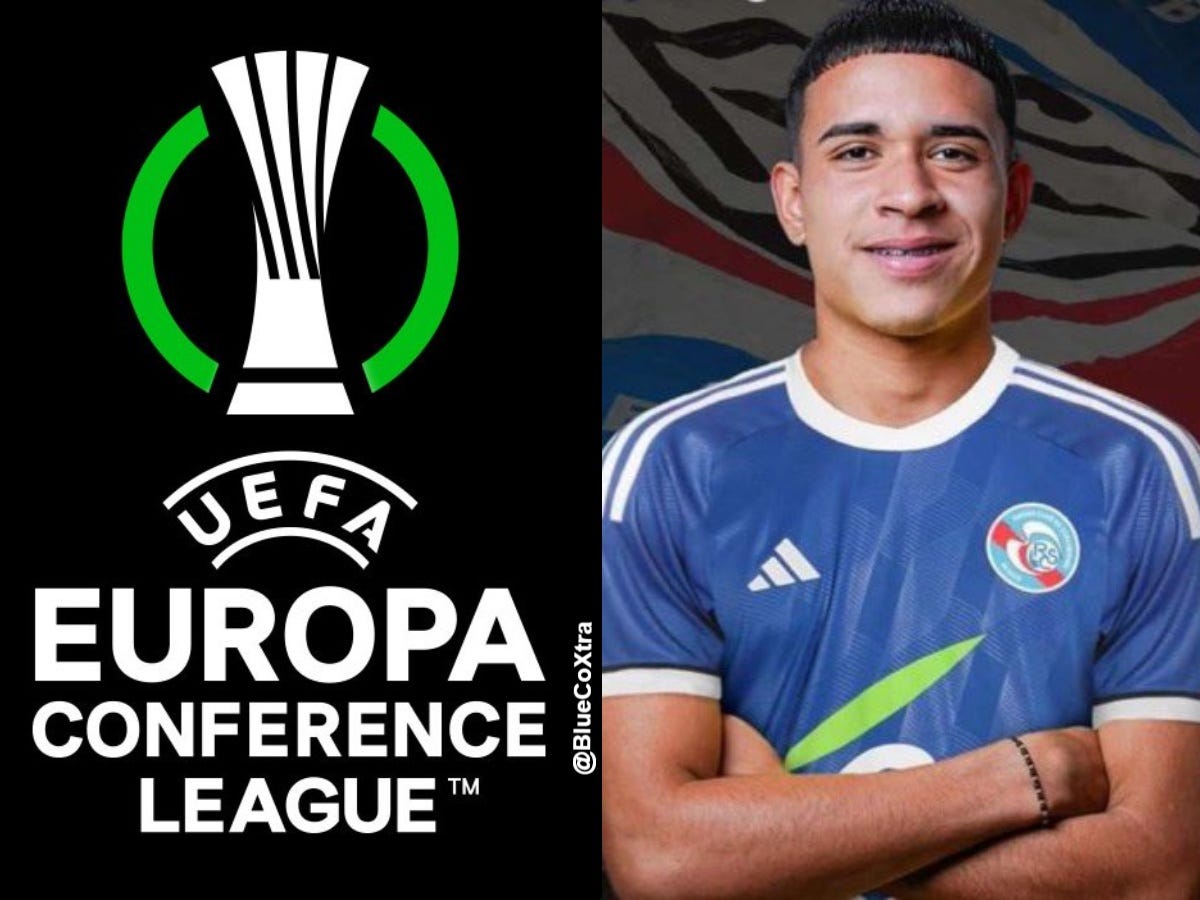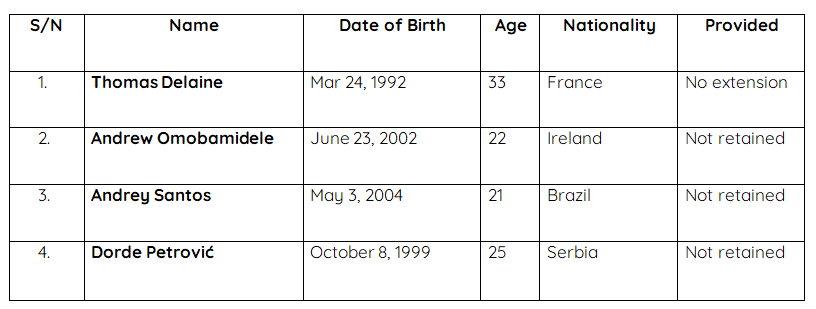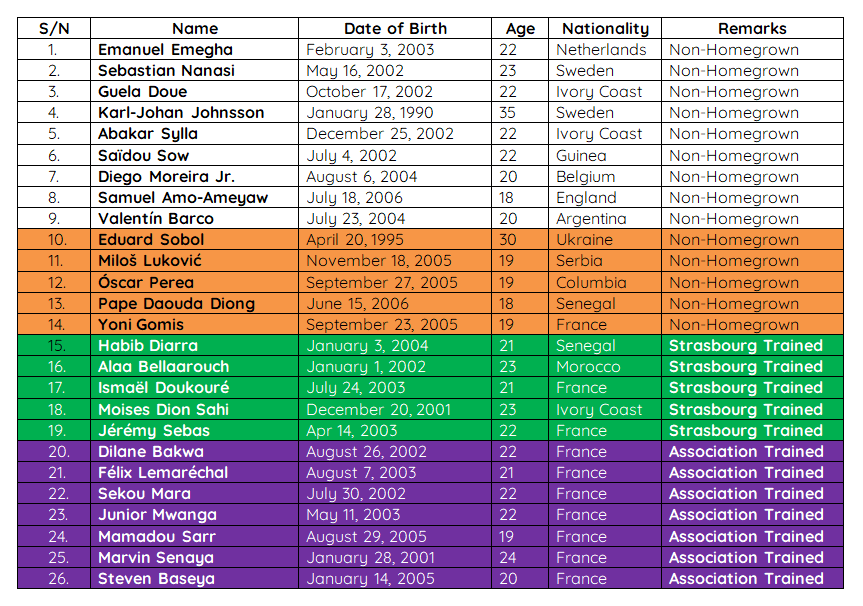Cracking the UEFA Code: Strasbourg’s Squad Overhaul for 2025/26
May 28, 2025
Next season, Chelsea FC's sister club, Racing Strasbourg, will compete in three demanding competitions: Ligue 1, the Coupe de France, and the UEFA Conference League. In the recently concluded 2024/25 season, Strasbourg fielded the youngest squad in Europe’s top five leagues, with an average age of just 22.2. That youthfulness came with both promise and pitfalls — the team struggled to balance just two competitions, resulting in an early Coupe de France exit. However, that setback appeared to galvanize the squad, culminating in an impressive 7th-place finish in Ligue 1.
With an even more congested fixture list on the horizon, the key question is: how will Strasbourg handle the pressure of three competitions?
The answer is clear — BlueCo must reinforce the squad. But it’s not simply about signing available players. This summer's recruitment needs to be smart, strategic, and fully aligned with UEFA regulations. Strasbourg must target players who not only raise the team’s quality but also comply with strict UEFA squad registration criteria. Why? The club must submit a registered squad ahead of the UEFA Conference League play-offs in August 2025.
This article breaks down the UEFA squad rules that apply to Racing Strasbourg, analyzes the current squad composition, and highlights the key areas where reinforcements are essential — all within the context of BlueCo’s long-term ambition to establish Strasbourg as a regular in European football.
UEFA Squad Rules: Key Points You Need to Know
We won’t dive too deep into the legal jargon of Article 31 of UEFA’s regulations—you can read them [here]—but here’s what really matters for Strasbourg’s squad planning:
Two squad lists must be submitted to UEFA:
List A – Professional players.
List B – U21 and academy players.
List A can include a maximum of 25 players.
Goalkeeper requirement:
At least 2 goalkeepers must be registered on List A.
A total of at least 3 goalkeepers must be registered across both lists.
The rule sets a minimum, so clubs are free to register more than 3 goalkeepers if they wish.
Locally trained player quota (List A):
Clubs may include more than 8 locally trained players, but:
A maximum of 4 can be "association-trained" (developed at another French club).
The rest must be "club-trained" (developed at Strasbourg).
For context, our research shows Brest registered 14 locally trained players in their 2024/25 UEFA Champions League squad. Assuming they used the maximum 4 association-trained players, the other 10 were developed in-house.
Definitions matter:
Club-trained = Registered with Strasbourg for three full seasons between the ages of 15 and 21.
Association-trained = Registered with any French club (under the FFF) for three full seasons between the ages of 15 and 21.
List B eligibility:
Players must be born on or after 1 January 2004,
And must have been registered with Strasbourg for at least two uninterrupted years,
Or three years, including a single one-year loan.
These rules have a direct impact on Strasbourg’s squad-building strategy and highlight areas where the club needs to focus during the transfer window, especially when balancing youth development, squad depth, and UEFA eligibility.
Players Departing in June 2025
Before building forward, let’s note the departures:
These exits will free up registration slots and wage space, but also create gaps that need to be filled smartly, especially for List A.
Strasbourg's Current UEFA List A Breakdown
Strasbourg currently has 26 players eligible for List A. This list includes all notable players currently loaned out by Strasbourg to other clubs:
Legend:
White Background: Quality non-homegrown players
Orange Background: Non-homegrown players who are, in our view, not of sufficient quality for European competition. These may need to be loaned out.
Green Background: Club-trained players (developed by Strasbourg)
Purple Background: Association-trained players (developed at another French club)
⚠️ Key Issues Highlighted in Table 2:
UEFA permits a maximum of 25 players on List A. Strasbourg currently has 26, so at least one player must be removed.
There are 7 association-trained players (ATPs) listed. UEFA rules allow a maximum of 4, meaning at least 3 ATPs must be excluded.
5 players marked in orange are judged to be of insufficient quality to justify a non-homegrown slot. The list appears young and lacks depth. These players should be prime candidates for replacement by BlueCo and Strasbourg.
Based on this analysis, removing 3 ATPs and the 5 underperforming non-homegrown players would create space for 7 or 8 new non-homegrown signings.
Suggested Chelsea → Strasbourg Player Moves
Mathis Amougou (CM, 18) – Association-Trained (AS Saint-Étienne)
May struggle to be included unless another ATP (Association-Trained Player) is removed.
BlueCo could consider replacing him with a profile like Dário Essugo, a 20-year-old Portuguese midfielder.
Kendry Páez (AM, 18) – Non-Homegrown
A dazzling Ecuadorian talent with immense potential.
Could flourish under Liam Rosenior’s guidance.
Brings flair, creativity, and vision to the midfield.
Filip Jørgensen (GK, 23) – Non-Homegrown
Danish goalkeeper with UEFA Conference League experience.
An ideal successor to Đorđe Petrović.
Eligible under UEFA’s flexible goalkeeper registration rule.
Other Players that should be considered:
Marc Guiu, Aaron Anselmino, and Ishe Samuels-Smith are also promising options.
Given FIFA’s three-loan limit per club, Strasbourg could opt to sign some players permanently, with buy-back or resale clauses included.
List B – Strasbourg’s Youth Options
Strasbourg has several players eligible for UEFA List B:
This list provides valuable flexibility, as it does not count towards the 25-player limit on List A. Several of these young players could serve as impact substitutes or rotation options in Ligue 1 and the Coupe de France.
Final Take: A Clear Strategy Is Essential
With UEFA regulations in place and three competitions on the horizon, Strasbourg must:
Limit their association-trained player quota to four
Replace underperforming non-homegrown players
Add seven or eight high-quality UEFA-eligible signings (preferably non-homegrown)
Optimise List B to provide opportunities for young talents
And the most important part? They’re already working on it.
With 7–8 new additions planned, Strasbourg looks set to be more competitive than ever under Liam Rosenior. This summer could mark the beginning of something special at the Stade de la Meinau.
✍️ Written by: BlueCo Xtra Editor — blending fan insight with behind-the-scenes reporting. Follow for more updates on Strasbourg, Chelsea, and BlueCo’s multi-club project.
📍 X/Twitter: BlueCo Xtra
📍 Instagram: BlueCo Xtra
📍 Threads: BlueCo Xtra







